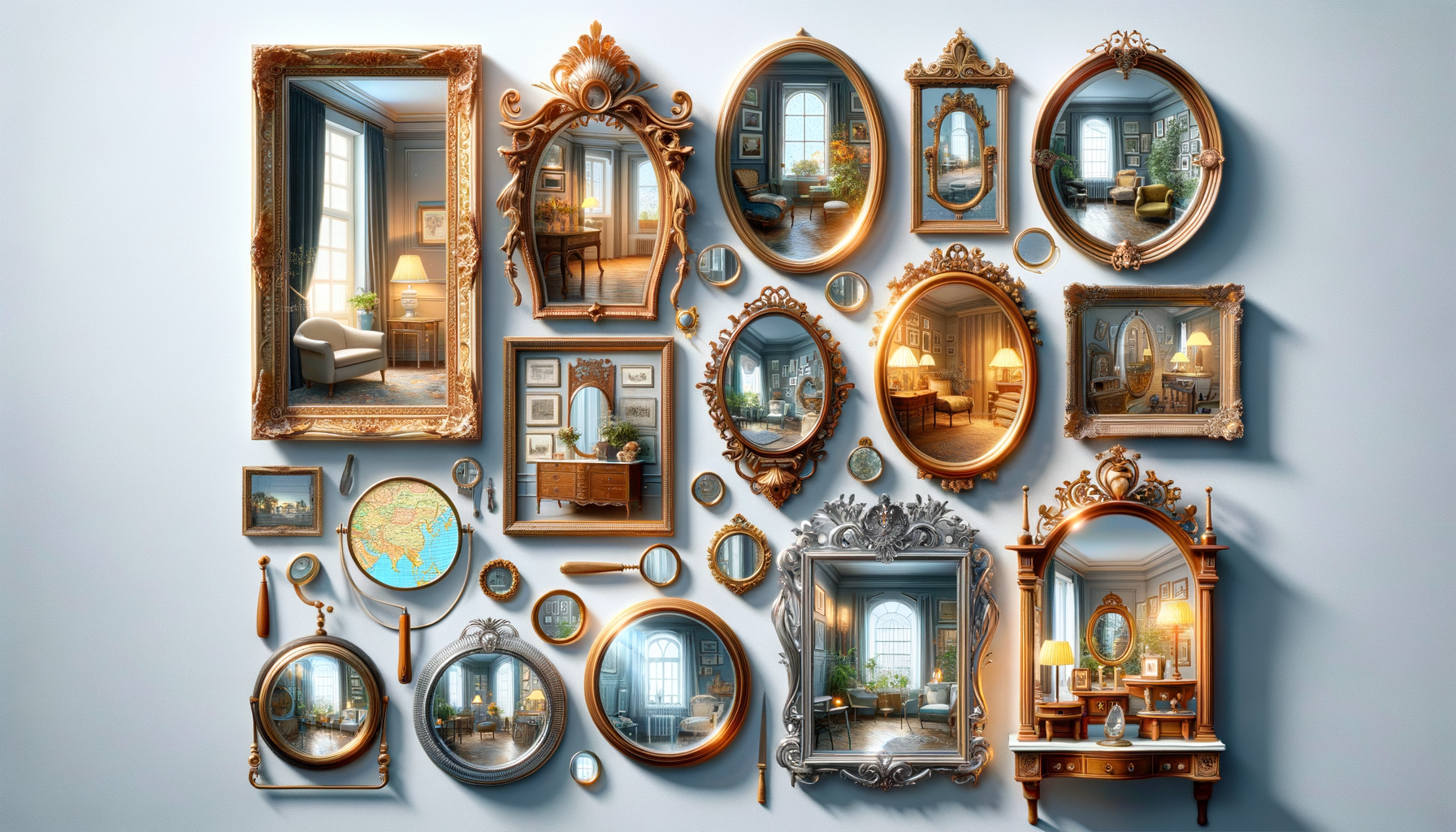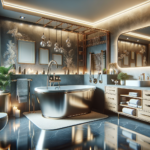The Historical Significance of Mirrors
Mirrors have been a part of human civilization for thousands of years, with their history tracing back to ancient times. In early civilizations, polished stones and metals served as primitive mirrors, reflecting the ingenuity of our ancestors. Over time, the evolution of mirrors paralleled advancements in technology and craftsmanship. The Roman Empire, for instance, saw the introduction of glass mirrors backed with lead, a significant leap from the polished copper or bronze used in earlier eras. The Renaissance period marked another milestone with the production of mirrors in Venice, where artisans perfected the art of mirror-making, creating objects of both utility and beauty.
Beyond their practical use, mirrors have held symbolic significance in various cultures. In ancient Egypt, they were associated with the goddess Hathor, representing beauty and femininity. Similarly, in Chinese culture, mirrors were believed to ward off evil spirits, reflecting their role as protective talismans. This blend of function and symbolism underscores the mirror’s enduring presence in human history, serving as both a tool and a cultural artifact.
The Aesthetic Appeal of Mirrors in Interior Design
In the realm of interior design, mirrors are celebrated for their ability to transform spaces. Their reflective surfaces can create the illusion of depth and space, making rooms appear larger and more open. This quality is particularly valuable in urban environments, where maximizing space is often a priority. Strategically placed mirrors can also enhance natural light, reflecting it into darker corners and brightening up a room.
Designers often use mirrors to add a decorative element to interiors. Available in various shapes, sizes, and styles, mirrors can complement any design aesthetic, from minimalist to ornate. A large, ornately framed mirror can serve as a focal point in a room, while a collection of smaller mirrors can create an intriguing gallery wall. The versatility of mirrors in design is further enhanced by their ability to reflect and amplify the colors and textures of a space, adding layers of complexity and interest.
Moreover, mirrors can be used to create visual symmetry and balance. In a dining room, for example, a mirror placed opposite a window can reflect outdoor scenery, creating a harmonious connection between the interior and exterior environments. This interplay of light and reflection not only enhances the aesthetic appeal but also contributes to a sense of tranquility and balance within a space.
Practical Uses of Mirrors in Daily Life
While mirrors are often appreciated for their aesthetic contributions, their practical uses in daily life are equally noteworthy. In personal grooming, mirrors are indispensable, providing the reflection needed for tasks such as shaving, applying makeup, or styling hair. The importance of mirrors in this context is evident in their ubiquitous presence in bathrooms and dressing rooms.
In addition to personal grooming, mirrors play a crucial role in safety and functionality. Rearview and side mirrors in vehicles are essential for safe driving, offering drivers a view of their surroundings and helping to prevent accidents. Similarly, convex mirrors are commonly used in stores and warehouses to enhance security and monitor areas that are otherwise difficult to see.
Mirrors also find applications in various scientific and technological fields. In optics, mirrors are used in telescopes, microscopes, and cameras to direct and focus light. The use of mirrors in solar energy systems is another example, where they concentrate sunlight to generate heat and electricity. These practical applications highlight the mirror’s versatility and its ability to serve a wide range of functions beyond mere reflection.
The Psychological Impact of Mirrors
Mirrors have a profound psychological impact, influencing our perception of self and space. The ability to see our reflection allows for self-examination and self-awareness, which are essential aspects of personal identity. This reflective quality can also affect our mood and confidence. A well-lit, flattering mirror can boost self-esteem, while a poorly lit or distorted mirror might have the opposite effect.
In addition to personal reflection, mirrors can alter our perception of space. They can create a sense of openness and expansiveness, which can be particularly beneficial in small or confined areas. This illusion of space can contribute to feelings of comfort and relaxation, enhancing the overall ambiance of a room.
Moreover, mirrors can influence social interactions and communication. The presence of mirrors in public spaces, such as elevators or lobbies, can affect how people perceive themselves and others. This phenomenon, known as the “mirror effect,” can lead to increased self-awareness and, in some cases, alter behavior. By reflecting both the physical and psychological aspects of our environment, mirrors play a subtle yet significant role in shaping human experiences.
Environmental and Economic Considerations
The production and disposal of mirrors have environmental and economic implications. Traditional mirror-making involves materials such as silver and aluminum, which require energy-intensive extraction and processing. The environmental impact of these processes includes resource depletion, energy consumption, and emissions.
However, advancements in technology have led to more sustainable practices in mirror production. For instance, some manufacturers now use recycled materials and eco-friendly coatings to reduce the environmental footprint of their products. These innovations not only benefit the planet but also offer economic advantages by reducing costs and appealing to environmentally conscious consumers.
From an economic perspective, mirrors are a cost-effective way to enhance the functionality and aesthetics of a space. They can increase property value by improving the appearance and ambiance of interiors. In retail settings, mirrors can enhance product displays and create a more inviting shopping experience, potentially boosting sales.
As society becomes more aware of environmental issues, the demand for sustainable and energy-efficient products, including mirrors, is likely to grow. This shift presents opportunities for innovation and growth within the industry, highlighting the ongoing relevance of mirrors in both aesthetic and practical contexts.








